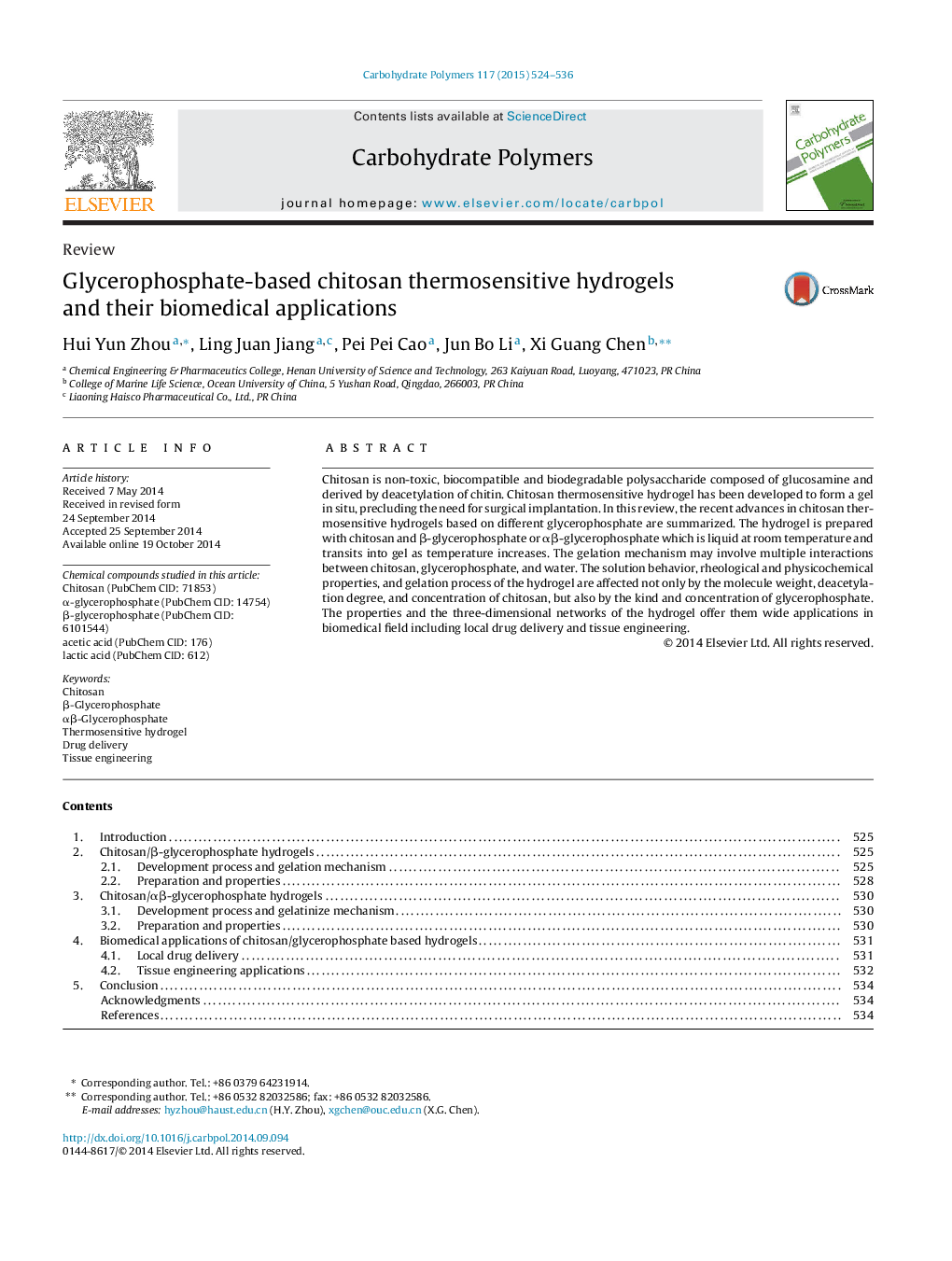| Article ID | Journal | Published Year | Pages | File Type |
|---|---|---|---|---|
| 7789835 | Carbohydrate Polymers | 2015 | 13 Pages |
Abstract
Chitosan is non-toxic, biocompatible and biodegradable polysaccharide composed of glucosamine and derived by deacetylation of chitin. Chitosan thermosensitive hydrogel has been developed to form a gel in situ, precluding the need for surgical implantation. In this review, the recent advances in chitosan thermosensitive hydrogels based on different glycerophosphate are summarized. The hydrogel is prepared with chitosan and β-glycerophosphate or αβ-glycerophosphate which is liquid at room temperature and transits into gel as temperature increases. The gelation mechanism may involve multiple interactions between chitosan, glycerophosphate, and water. The solution behavior, rheological and physicochemical properties, and gelation process of the hydrogel are affected not only by the molecule weight, deacetylation degree, and concentration of chitosan, but also by the kind and concentration of glycerophosphate. The properties and the three-dimensional networks of the hydrogel offer them wide applications in biomedical field including local drug delivery and tissue engineering.
Keywords
Related Topics
Physical Sciences and Engineering
Chemistry
Organic Chemistry
Authors
Hui Yun Zhou, Ling Juan Jiang, Pei Pei Cao, Jun Bo Li, Xi Guang Chen,
